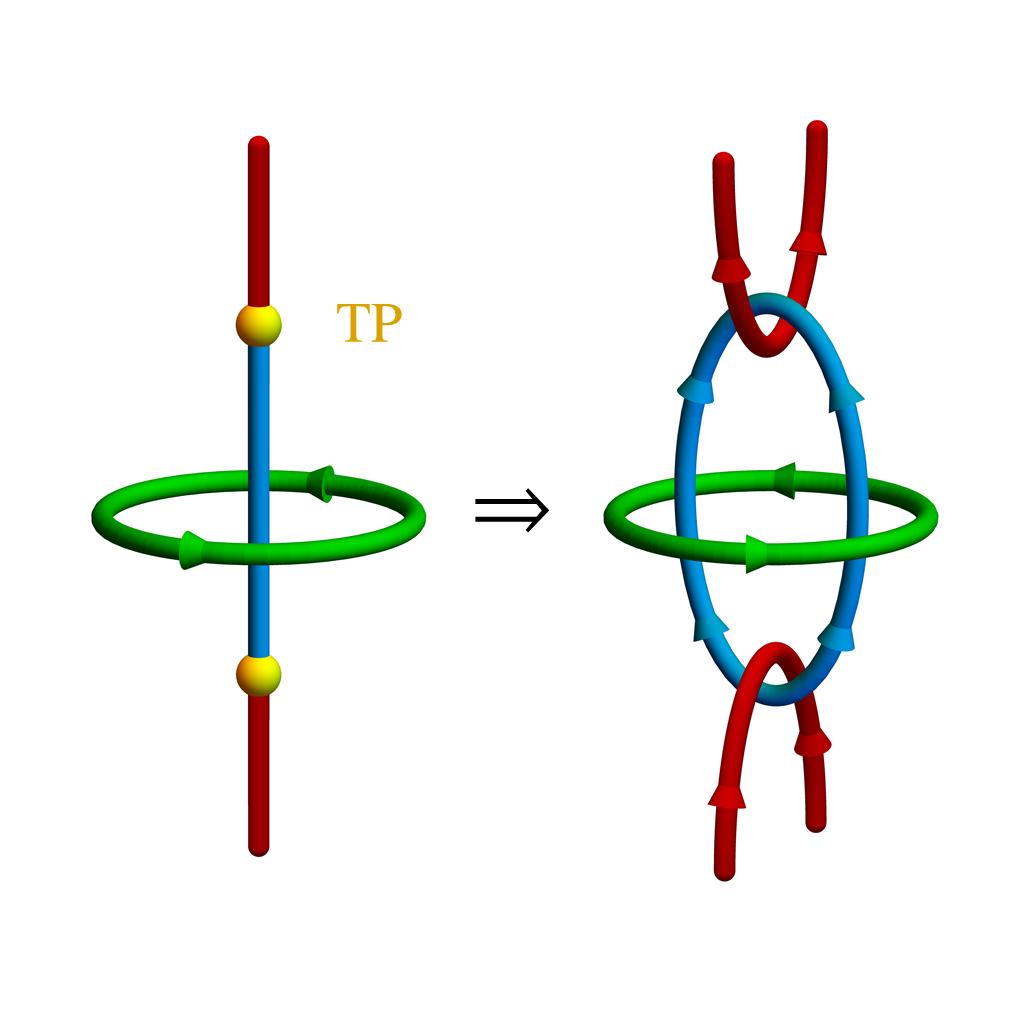From triple-point materials to multiband nodal links

 PDF
Supplement
Journal
arXiv
Data/Code
PDF
Supplement
Journal
arXiv
Data/Code
P. M. Lenggenhager, X. Liu, S. S. Tsirkin, T. Neupert, and T. Bzdušek
Phys. Rev. B 103, L121101 (2021) – Published 01 Mar 2021

We classify three-fold momentum-space band structure degeneracies (triple points) occurring along high-symmetry lines of \(\mathcal{P}\mathcal{T}\)-symmetric crystalline solids with negligible spin-orbit coupling. By employing the recently discovered non-Abelian band topology, we argue that a rotation-symmetry-breaking strain transforms a certain class of triple points into multiband nodal links. We propose material candidates and study the consequences of this phenomenon.
Abstract
We study a class of topological materials which in their momentum-space band structure exhibit three-fold degeneracies known as triple points. Specifically, we investigate and classify triple points occurring along high-symmetry lines of \(\mathcal{P}\mathcal{T}\)-symmetric crystalline solids with negligible spin-orbit coupling. By employing the recently discovered non-Abelian band topology, we argue that a rotation-symmetry-breaking strain transforms a certain class of triple points into multiband nodal links. Although multiband nodal-line compositions were previously theoretically conceived, a practical condensed-matter platform for their manipulation and inspection has hitherto been missing. By reviewing the known triple-point materials in the considered symmetry class, and by performing first-principles calculations to predict new ones, we identify suitable candidates for the realization of multiband nodal links. In particular, we find that Li\(_2\)NaN is an ideal compound to study this phenomenon, where the band nodes facilitate largely tunable density of states and optical conductivity with doping and strain, respectively. The multiband linking is expected to equip the nodal rings with monopole charges, making such triple-point materials a versatile platform to probe the non-Abelian band topology.